What's New
Displaying results 971 - 980 of 4052
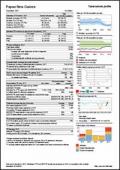
Resource | Reviews and Snapshots,
Tuberculosis country profiles are generated automatically based on data reported by countries and which are held in WHO's global TB database.
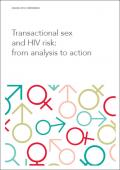
Resource | Publications,
This reference document provides a detailed analysis of transactional sex and discusses policy options and principles of engagement around transactional sex in the context of HIV prevention. Although transactional sex is practiced by men and women in all regions of the world, this document focuses specifically on the determinants and consequences of adolescent girls’ and young women’s engagement in transactional sex in sub-Saharan Africa. We focus on this population because of the potential importance of transactional sex for young women’s HIV risk in this region. The document will not address men who have sex with men or gay men and transgender people and the engagement around transactional sex.
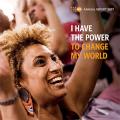
Resource | Publications,
Year on year, millions of women and adolescents in 155 countries and territories have been progressively able to exercise their sexual and reproductive health and rights. This is in no small measure as a result of UNFPA programmes and activities.
The UNFPA strategic plan for 2014-2017 set ambitious targets for increasing access to sexual and reproductive health services. These services have empowered millions of women to make their own decisions about whether, when or how often to become pregnant. They have enabled millions of teenagers to avoid unplanned pregnancy and to make safe and healthy transitions to adulthood. And they have slowed the unnecessary and cruel tide of maternal death.

Resource | Publications,
Supported by infographics, the 2017 illustrated annual report sums up the evaluation function’s performance in the areas of corporate and decentralized evaluations and provides an overview of the measures undertaken to strengthen UN Women’s contribution to UN system-wide coordination and national capacity development for gender-responsive evaluation.
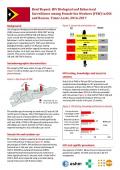
Resource | Fact Sheets,
HIV Integrated Biological and Behavioural Surveillance (IBBS) surveys were conducted in 2016-2017 among female sex workers (FSW) in Dili and Baucau, Timor-Leste to track the HIV epidemic, monitor sexual risk behaviours, and to measure access to intervention programs in responding to HIV. FSW were defined as biological females, aged 17 to 49 years, having exchanged sex (anal and/or vaginal) for money or other items of value, to at least two clients, over the past 12 months. This survey resulted in a sample of 202 FSW in Dili and 110 FSW in Baucau.
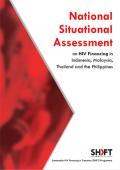
Resource | Publications,
SHIFT has created country-specific snapshots of its 2017 National Situational Assessment report on HIV Financing in Indonesia, Malaysia, Thailand, and the Philippines. The National Situational Assessment Report assesses the availability and sufficiency of HIV financing resources, as well as how resources are equitably and efficiently allocated across these four countries. The country snapshot provides an executive summary of the four countries as well as an in-depth review for each country. By providing a current snapshot on HIV financing in Indonesia, Malaysia, Thailand, and the Philippines, the assessment outlines HIV expenditure against HIV epidemiology, identifies national HIV financing mechanisms, and describes national budget cycles and processes where available.
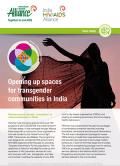
Resource | Publications,
This is the first in a series of rapid case studies examining ‘person-centred’ aspects of community-led HIV prevention, treatment and care programmes in different contexts. Person-centred approaches are founded on principles such as empowering and informing beneficiaries to enable them to participate in joint decision making; tailoring services to suit their context; respecting their preferences; and adapting and linking services to ensure that all their needs (physical, emotional and psychological) are met over their life course.
The case studies provide practical examples of what person-centred HIV programmes look like, and promote learning from the experiences and perspectives of the beneficiaries of these programmes.
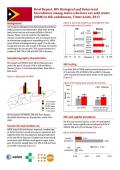
Resource | Fact Sheets,
HIV Integrated Biological and Behavioural Surveillance (IBBS) surveys were conducted in 2016-2017 among males who have sex with males (MSM) in Dili and Baucau, Timor-Leste to track the HIV epidemic, monitor sexual risk behaviours, and to measure access to intervention programs in responding to HIV. MSM were defined as biological males, aged 17 to 49 years, having had anal sex with a male in the past 12 months, and living in the survey area. This survey resulted in a sample of 200 FSW in Dili and 105 FSW in Baucau.
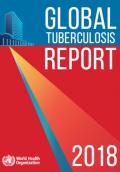
Resource | Publications,
WHO has published a global TB report every year since 1997. The main aim of the report is to provide a comprehensive and up-to-date assessment of the TB epidemic, and of progress in prevention, diagnosis and treatment of the disease at global, regional and country levels. This is done in the context of recommended global TB strategies and targets endorsed by WHO’s Member States and broader development goals set by the United Nations.
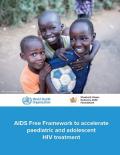
Resource | Guidelines,
Start Free, Stay Free, AIDS Free is a collaborative framework to accelerate the end of the AIDS epidemic among children, adolescents and young women by 2020.
Every child and adolescent living with HIV should have access to antiretroviral therapy (ART). The AIDS Free component of the framework has the specific goal of ensuring 95% of all children and adolescents living with HIV have access to lifelong ART by the end of 2018. These efforts will need to be sustained until 2020, when it is estimated that treating 95% of all children and adolescents living with HIV will require providing ART to 1.4 million children (aged 0-14). and 1 million adolescents (aged 15-19).





